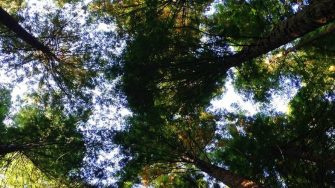
Overview
The UNSW Data Analysis for Life and Earth Science (BEES2041) course and BEES5041 Data Analysis: Environmental Science & Management aims to develop your quantitative skills for solving problems in the fields of biological, earth and environmental science. You’ll explore the design of sampling and experimental research while learning how to interpret and communicate statistical results.
Thanks to the rise of new observing technologies, we now have more environmental data than ever before. With a need to become more evidence-based, many companies and organisations are embracing the power of big data to understand the natural world and solve environmental problems.
This second-year course emphasises practical work, problem-solving and hands-on experience with R in the computer laboratory. You’ll cover a suite of statistical tests and methods to visualise data that are relevant to most areas of life and earth sciences. These disciplines include:
- physiology
- ecology
- environmental science
- geography
- geology
- genetics
- behavioural biology
- marine science.
Term offering: Term 1
Course attendance: In person
Level:
- Postgraduate.
- Undergraduate - Second year.
Discipline:
- Biology.
- Earth science.
- Ecology.
- Geography.
- Marine science.
Course code: BEES2041, BEES5041
Learning outcomes
Upon completion of this course, you’ll have the ability to:
- identify different types of environmental data
- outline the logical process involved in hypothesis testing
- identify appropriate statistical tests for a given sampling or experimental design, execute and interpret the results of such tests
- outline the logic and assumptions of linear models (regression and ANOVA)
- create graphics to visualise environmental data
- explain the basic principles of geostatistical analysis
- interpret figures and statistical output derived from multivariate analyses (cluster analyses, MDS and PCA)
- communicate the results of experiments or sampling exercises with appropriate integration of text, figures and statistical support for results.
Conditions for enrolment
Before enrolling in the course, it’s assumed you have studied Statistics for Life and Social Sciences (MATH1041).
Career opportunities
Environmental managers are increasingly in need of graduates that are able to collect, interpret and communicate the large amounts of environmental data now available. Large scale observing programs from remote sensing, on-ground monitoring and citizen science are providing exciting opportunities to better understand the natural world and manage human impacts. Career opportunities often require combining biological, earth and environmental science skills with the quantitative skills needed to analyse and communicate these data.
Relevant roles
- Environmental manager
- Ecological consultant
- Environmental engineer
- Climate scientist
- Wildlife biologist
- Geologist
- Geographer
- Spatial scientist
Find out more
For more information, please contact Associate Professor Daniel Falster.
T: +61 2 9065 9519
